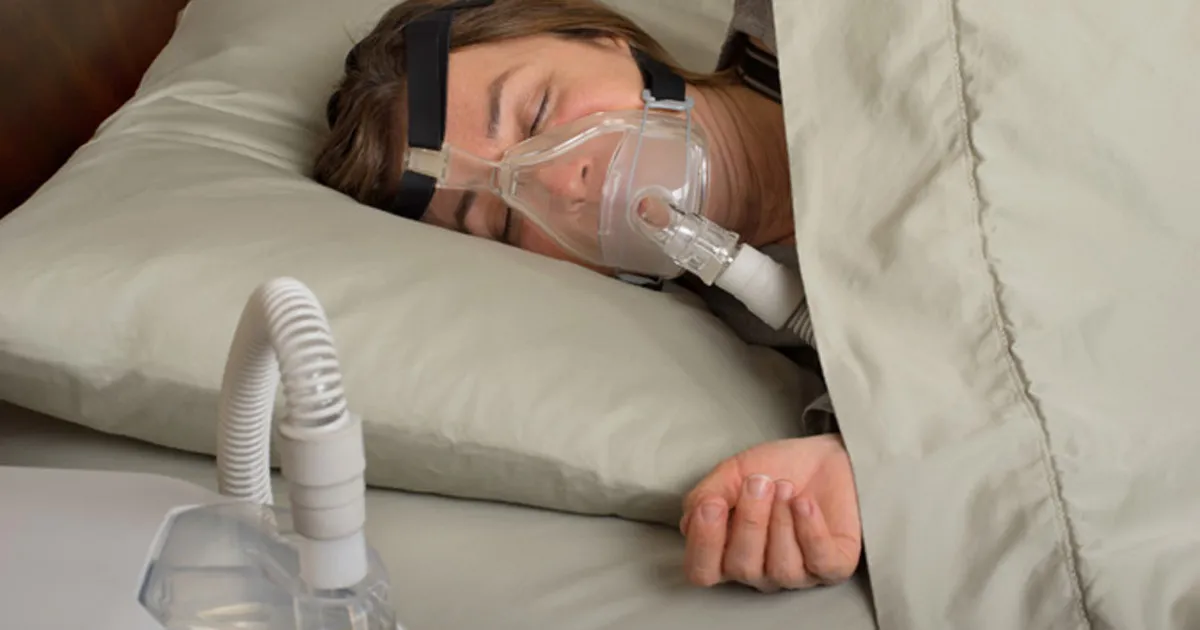Discussing stroke risk with younger patients

The recent deaths of actor Luke Perry aged 52 years, and director John Singleton, aged 51 years, from strokes shone a brighter spotlight on the fact that the condition can strike at any age, experts told Healio Primary Care.
“Strokes are often thought of as an older person’s disease. Many people in their 40s and 50s or even younger don’t realize they can be at risk for stroke too,” Eliza Miller, MD, assistant professor of neurology, division of stroke and cerebrovascular disease at NewYork-Presbyterian/Columbia University Irving Medical Center, said in an interview.
“Stroke is a leading cause of both disability and death. Irreversible injury to the brain is at stake and primary care physicians are in the strongest position to interrupt and identify this process,” Alexander A. Khalessi, MD, MS, chair of neurological surgery at the University of California San Diego added.
With a Journal of the American Heart Association study indicating hospitalizations for stroke among patients aged 25 to 44 years increasing, Healio Primary Care asked experts for recommendations on helping PCPs recognize risk factors and communicate with their patients about the potential for stroke in younger age groups.
Risk factors more prevalent in young patients
John W. Cole, MD, MS, an associate professor of neurology at the University of Maryland Medical System, said stroke risk factors that are more common in younger patients include being male, black or Hispanic, as well as positive HIV status, cocaine or amphetamine use, engagement in activities that raise BP and altered hormone levels (including the use of estrogen-containing oral contraceptives), or obstructive sleep apnea.

“Younger people also engage in activities that put them at more risk for artery dissection and whiplash injuries to the neck, such as four-wheel off-road driving or playing contact sports. Such dissections can lead to a stroke. If a patient tells you they developed neck pain, or jaw pain, after those types of activities, it would be prudent to order a CTA of the head and neck to ensure that a dissection has not occurred,” he added. Any neurological deficits in such as setting would raise the concern for a stroke and an immediate hospital-based evaluation.
Younger patients may also report an unusual headache presentation, Miller said “A headache that the patient describes as one that is different than one they have had before or one that comes on suddenly and is accompanied by nausea or vomiting, can be a sign that the head pain is really a stroke. PCPs with any doubts should do a CT scan or schedule an appointment for the patient with a neurologist immediately to make a diagnosis,” she said.
Mayte E. van Alebeek, MD, of the Center for Neuroscience in Nijmegen, the Netherlands, and colleagues described other potential stroke risk factors prevalent in younger patients in a Journal of Cerebral Blood Flow & Metabolism article: acute and chronic systemic conditions, acute and chronic head and neck disorders, arteriopathy, cardiac disorders and being less than 6 weeks pregnant.
These criteria identified 88% of 226 patients with stroke who were previously told their stroke was of “unknown etiology” after utilizing the TOAST criteria (large-artery atherosclerosis, small-artery occlusion and cardioembolism) that is sometimes considered the ‘gold standard’ in older patients. According to the article, van Alebeek and colleagues’ specific criteria also identified at least one potential stroke risk factor in 94% of 656 other younger patients.
Other risk factors, symptoms
Many of the risk factors that had previously been associated with old age — high BP and/or cholesterol, smoking, obesity and diabetes — are being seen more often in younger patients, and should be addressed by PCPs, Miller and Cole said.
“It’s amazing how many stroke risk factors, particularly hypertension, that patients have developed by the time they reach 40,” Miller said in the interview.
“I sometimes wish hypertension hurt, because if it did, people would go to the doctor but because it doesn’t, hypertension can go unnoticed for years. Therefore, encourage your patients to get their blood pressure checked at other times throughout the year besides their annual physical, such as at the pharmacy or the workplace,” she added.
Cole said once a PCP and patient have identified risk factors, “the pair should work together to eliminate of as many of them as possible. If you have a smoker with high BP, and you can eliminate one risk factor or bring one of them under improved control, you are not only eliminating the risk factor, but also reducing their synergistic risk and doing the patient a great service.”

“Make sure your patients understand that their brain has few pain receptors, often we can’t really feel when something is wrong there, such as a stroke. Thus, they need to know a stroke’s symptoms often cause no pain, only functional deficits as based on the region involved, including weakness, numbness, and vision loss, among others,” he continued.
Data suggest that public awareness campaigns designed to increase awareness of stroke symptoms have had limited success, suggesting that patient reminders are warranted.
An American Heart Association/American Stroke Association spokesperson has previously told Healio Primary Care that their data indicate only 12% of 22,155 U.S. residents asked knew what all the four letters of the ‘FAST’ acronym to recognize the symptoms of stroke in themselves and in others: Face drooping, Arm weakness, Speech difficulties and Time to call emergency services.
In addition, a U.K-based study appearing in JAMA Neurology found that campaigns designed to bring greater awareness to ‘FAST’ had little impact on patients seeking medical attention in those countries, with its researchers projecting that this inaction corresponded to about 100 potentially preventable strokes per 1 million inhabitants each year.

Cole and Miller said such data should prompt PCPs to remind patients of ‘FAST.’ They also noted that some health care professionals have begun using ‘BE FAST’, with the B standing for balance and E standing for eye, or vision problems, as additional symptoms.
“Tell patients if they suddenly can’t pick up fork, if their arm doesn’t ‘wake back up’ after it ‘falls asleep’ or if they have balance, speech or vision problems, and there’s no logical reason why such deficits occurred, that is not normal. They need to seek immediate medical care and get to an emergency room right away,” Cole said in the interview.
‘Atypical’ symptoms
An American Academy of Neurology panel cautioned that many stroke symptoms, regardless of age of onset, are either not unique to stroke or not always present. The group wrote about the ‘atypical’ symptoms in a consensus panel report that appeared in Neurology:
- “Right-hemispheric strokes are often misdiagnosed initially because language is preserved. Non-localizing syndromes, including neuropsychiatric symptoms, acute confusional states, and diminished level of alertness, may sometimes be the presenting features.”
- “While strokes usually cause negative symptoms such as weakness, positive symptoms can develop, including unilateral limb-shaking, hemiballismus, or chorea. In patients presenting with dizziness, it is particularly difficult to distinguish stroke from vestibular neuronitis or Ménière disease.”
- “A negative head-impulse test, skew deviation, or direction-changing nystagmus in eccentric gaze has a sensitivity of 100% and specificity of 96% for stroke. Patients should not be dismissed unless they can walk without imbalance.”
- “A painful Horner syndrome, or coexisting cranial neuropathies, should always raise suspicions for [arterial] dissection; all cranial nerves except the olfactory nerve may be affected by dissection.”
Miller said the emotional consequences of an actual stroke in younger patients who survive tend to linger not only because they typically will live longer than older patients who had one, but also because they may also encounter friends and family members who question the diagnosis.
“Besides the physical impact of strokes, these attacks can cause depression, anxiety and fatigue. This can be caused by either the fear that they will have another stroke or that people won’t believe they were afflicted with one. This fact alone justifies raising stroke awareness among your younger patients.”
“Strokes are scary things for patients and scary things for doctors. If everyone slightly raised their index of suspicion then maybe some of these tragedies can be avoided,” she added. – by Janel Miller
References:
Adams Jr HP, et al. Stroke. 1993;Jan;24(1):35-41.
CDC.gov. "Stroke facts." https://www.cdc.gov/stroke/facts.htm. Accessed May 30, 2019.
CNN.com. "John Singleton, 'Boyz n the Hood' director, is dead at 51." https://www.cnn.com/2019/04/29/entertainment/john-singleton-dead/index.html. Accessed May 30, 2019.
Hakan Ay. Curr Neurol Neurosci Rep. 2010;Jan;(1):14-20.
NBC News. "Luke Perry, of '90210' fame, dead at age 52." https://www.nbcnews.com/pop-culture/pop-culture-news/luke-perry-90210-fame-dead-age-52-n979046. Accessed May 30, 2019.
Ramirez L, et al. J Am Heart Assoc. 2016;doi:10.1161/JAHA.116.003233.
Singal AB, et al. Neurology. 2013;doi:10.1212/WNL.0b013e3182a4a451.
Smajolic D. Vasc Health Risk Manag. 2015;doi:10.2147/VHRM.S53203.
Van Alebeek ME, et al. J Cereb Blood Flow Metab. 2018;doi:10.1177/0271678X17707138.
Wolters FJ, et al. JAMA Neurol. 2018;doi:10.1001/jamaneurol.2018.1603.
Disclosures: Cole reports no relevant financial disclosures. Miller reports receiving funding from Columbia University's Louis V. Gerstner Jr. Scholar Award, NIH NCATS – KL2TR001874 and NIH NINDS – K23NS107645. She also reports performing medicolegal consulting related to maternal stroke.
